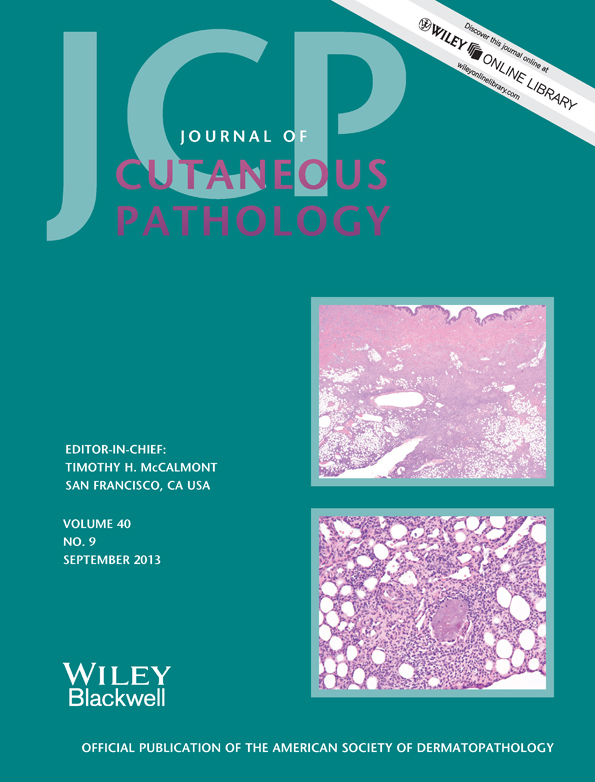Rosette-like structures in the spectrum of spitzoid tumors
Abstract
Background
Spitz nevi demonstrate a diverse spectrum of morphologies. Recently, there have been two reported examples of Spitz nevi with rosette-like structures similar to Homer-Wright rosettes. Rosettes have also been described in melanomas and in a proliferative nodule arising in a congenital nevus.
Methods
A retrospective review of 104 cases of Spitz nevi and variants (n = 51), pigmented spindle cell nevi (n = 26), combined melanocytic nevi with features of Spitz (n = 8), atypical Spitz tumor (AST, n = 9), and spitzoid melanoma (n = 10).
Results
Rosette-like structures were present in 3 of the 104 cases (2.9%), including a compound Spitz nevus, a desmoplastic Spitz nevus, and an AST. All three cases demonstrated several foci of small nests of epithelioid cells with peripherally palisaded nuclei arranged around a central area of fibrillar eosinophilic cytoplasm. Immunohistochemical staining of the three spitzoid lesions demonstrated that the rosette-like structures express S100 protein, Melan-A, and neuron specific enolase (NSE) and lacked expression of neurofilament, glial fibrillary acidic protein and synaptophysin.
Conclusions
While uncommon, rosette-like structures can occur as a focal feature in Spitz nevi and AST. Rosette-like structures may represent a normal morphologic finding in Spitz nevi, and awareness of them may prevent misdiagnosis as a neural tumor or melanoma.




